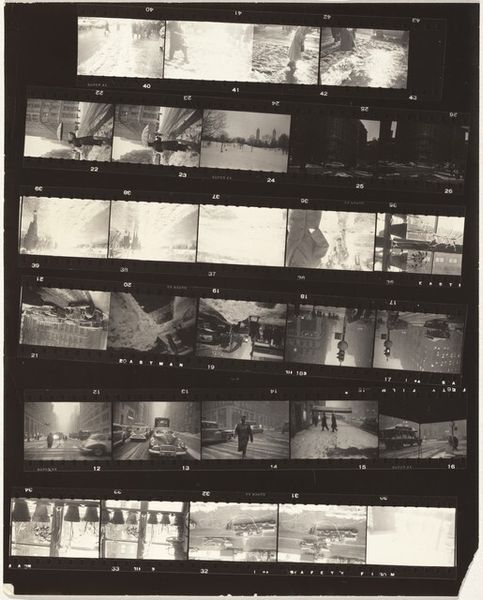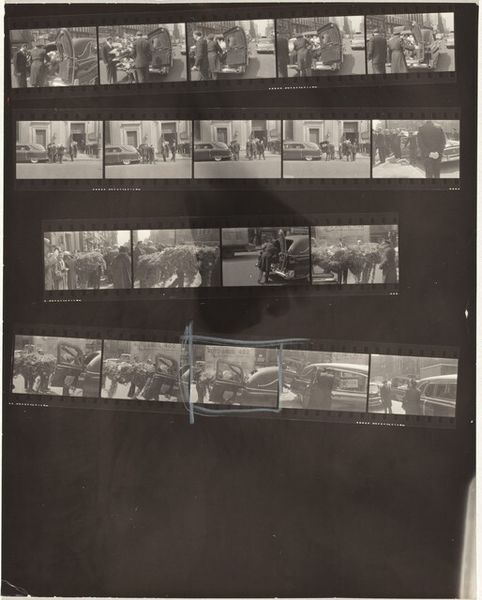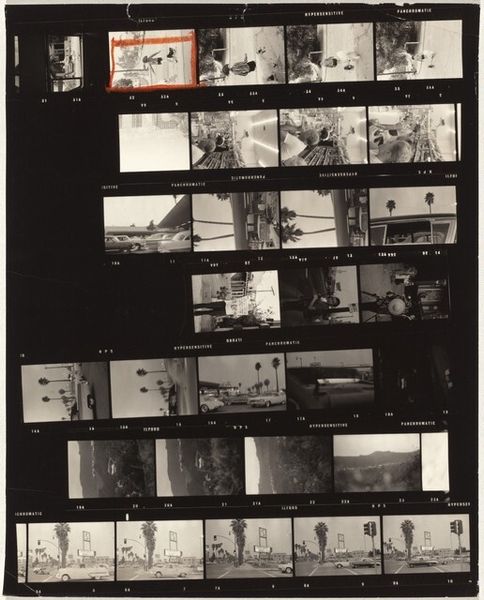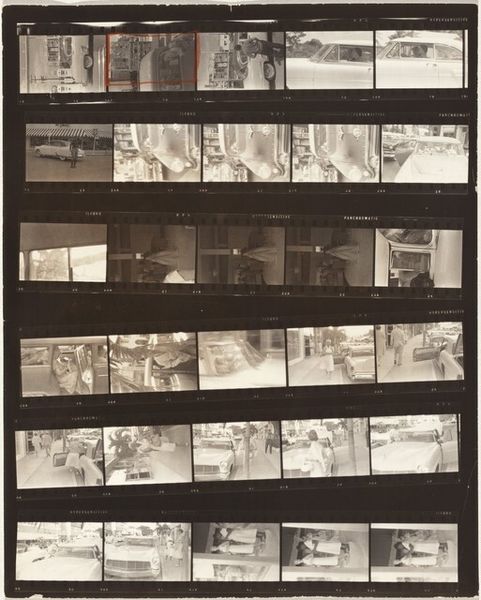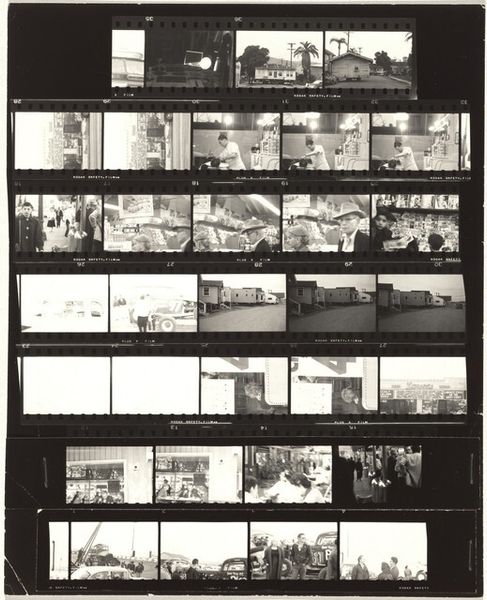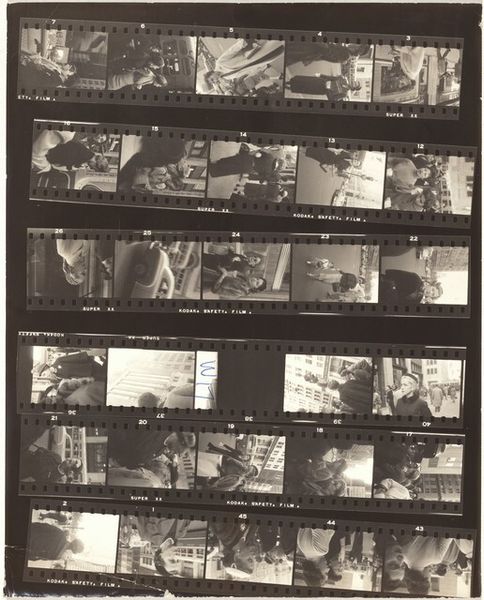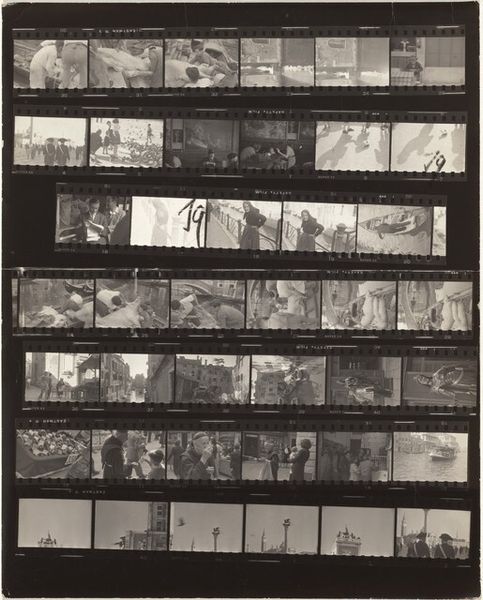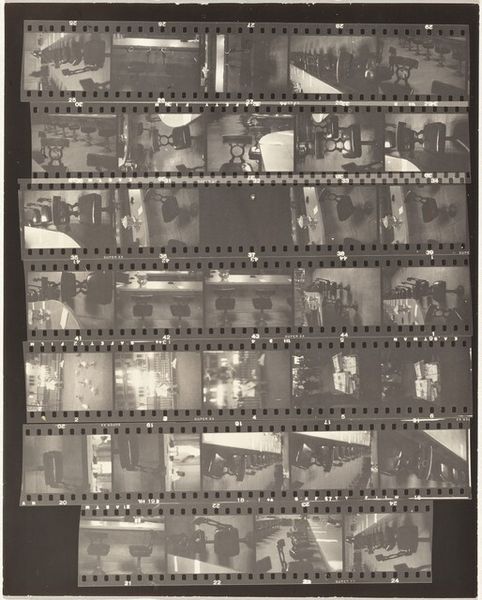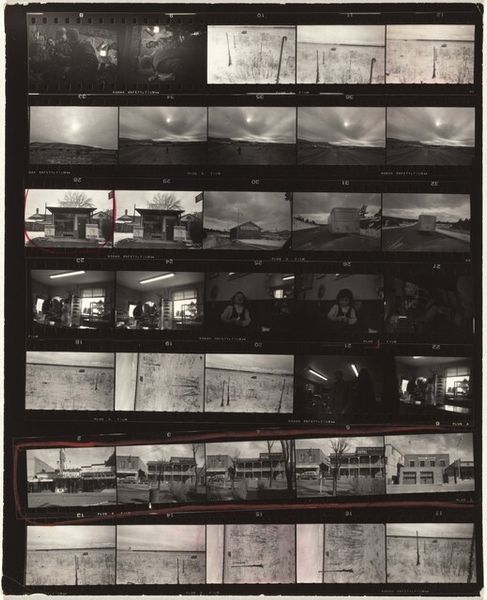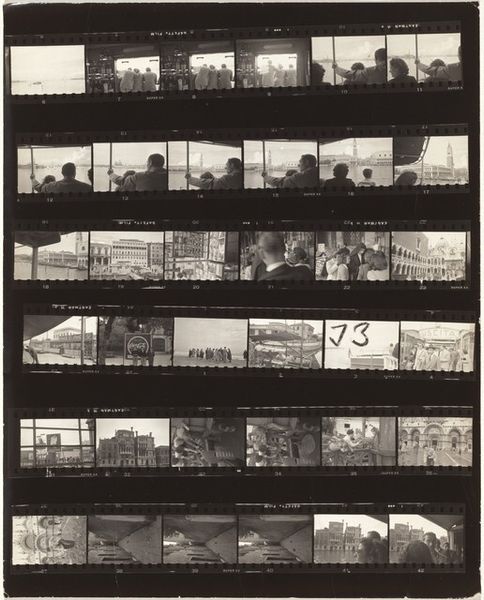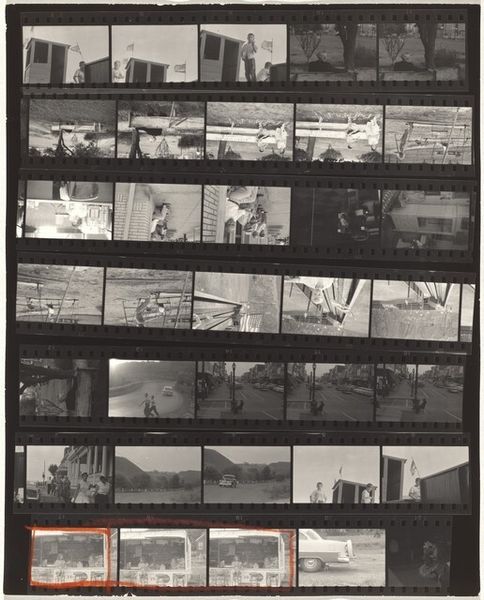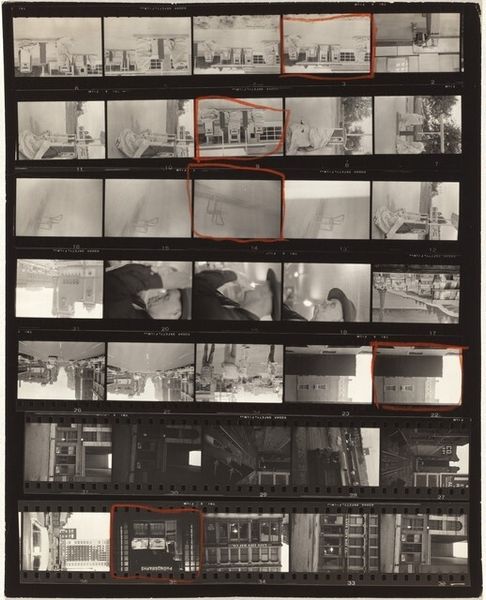
photography, gelatin-silver-print
#
desaturated
#
film photography
#
landscape
#
archive photography
#
street-photography
#
photography
#
historical photography
#
gelatin-silver-print
#
modernism
#
realism
Dimensions: overall: 25.3 x 20.4 cm (9 15/16 x 8 1/16 in.)
Copyright: National Gallery of Art: CC0 1.0
Editor: We’re looking at Robert Frank’s "Guggenheim 351--Esso oil refinery, Baton Rouge, Louisiana" from 1955, a gelatin-silver print showing a contact sheet of industrial images. There's a gritty realism, especially with the rough edges of the sheet visible. How do you read the visual language here, in terms of composition and tonal range? Curator: Note the structural layout itself: rows of individual frames acting almost like a visual rhythm. The contrast isn't simply about light and dark, but also the sharp versus soft focus across images, the repetition of industrial motifs like pipelines and smokestacks, creating a feeling of unrelenting machinery. Does that read to you as monotony, or is something else communicated in this structure? Editor: It feels like both. There’s the repetitiveness you mentioned, but the slight variations keep my eye moving—almost a narrative thread, yet without a clear storyline. Does the lack of a singular, finalized image alter its significance? Curator: Precisely. This form negates a traditional photograph’s aim of capturing the "decisive moment." We see a collection of moments. In essence, it prompts questions about authorship, process, and the selection criteria themselves, creating new relations between object and spectator. Notice how Frank presents us not just the ‘what’ but hints at the ‘how’ and ‘why’. What might this imply? Editor: It feels very modern—a focus on the means of production as much as the final image. I hadn’t thought of it as actively questioning traditional photography until now. Curator: Indeed, examining the forms generates greater awareness of content and practice. I think looking at art this way makes a big difference in its appreciation and enjoyment. Editor: I see that clearly. Thinking about the visual syntax changes everything.
Comments
No comments
Be the first to comment and join the conversation on the ultimate creative platform.
